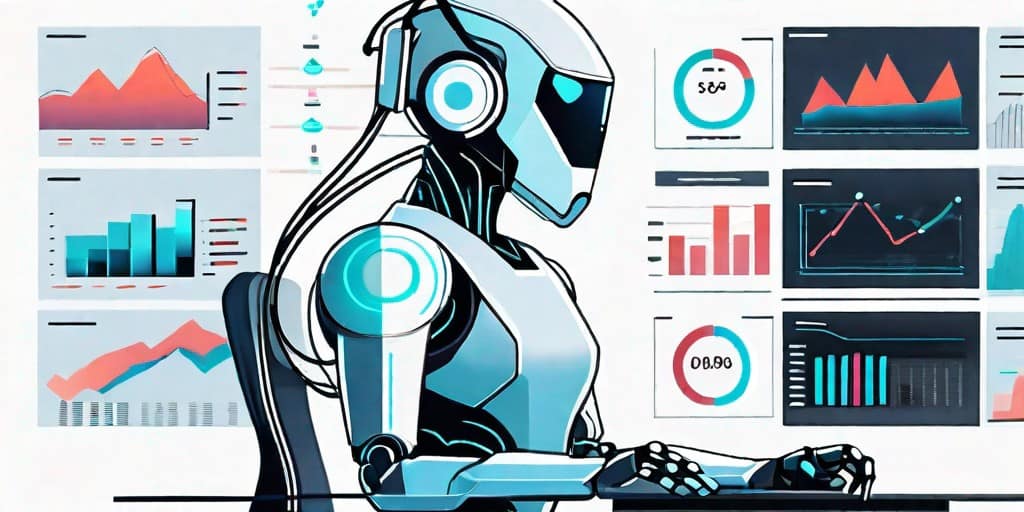The rise of artificial intelligence (AI) has already had a profound impact across various industries, and sales teams are no exception. As businesses adapt to changing technologies and expectations, AI plays an increasingly crucial role in transforming how sales departments operate. AI has made significant strides in automating the role of Sales Development Representatives (SDRs). By leveraging AI SDRs, sales teams can dramatically increase efficiency, streamline lead qualification, and improve the overall sales process.
This blog will explore the best practices for implementing AI SDRs within your sales team. We’ll examine how AI can be used to enhance your sales development efforts, explore the essential steps for successful AI integration, and provide tips for ensuring that your AI SDRs are aligned with your sales goals. Whether you are already considering AI SDRs or are in the early stages of exploring the technology, this guide will provide valuable insights.
The Role of AI SDRs in Modern Sales Teams
Sales Development Representatives (SDRs) have long been the backbone of lead generation and initial outreach. Their primary responsibilities include prospecting, qualifying leads, and setting up meetings for account executives or sales managers. However, these tasks can be time-consuming and repetitive, leading to inefficiencies within sales teams.
AI SDRs use advanced machine learning algorithms, natural language processing (NLP), and predictive analytics to automate many tasks. They can handle tasks such as:
- Lead Scoring and Qualification: AI systems analyze incoming leads and score them based on predefined criteria, such as engagement levels or potential value to the business. This helps prioritize the most promising leads for follow-up.
- Personalized Outreach: AI SDRs can draft and send personalized emails or messages at scale, adjusting tone, content, and timing to optimize response rates.
- Follow-ups: AI can schedule and automate follow-up emails, ensuring no lead is forgotten and that communication remains consistent.
- Data Analysis: AI systems can quickly analyze massive amounts of data, identify trends, and offer insights into the most effective sales strategies.
By using AI to handle repetitive tasks, human SDRs can focus their time on more strategic efforts, such as building relationships with prospects, nurturing leads, and closing deals.
Step 1: Align AI SDR Implementation with Business Goals
Before diving into the technicalities of integrating an AI SDR into your sales workflow, it is important to take a step back and align the technology with your broader business objectives. This step is critical for ensuring that the AI tool will effectively contribute to your sales goals.
Defining Clear Sales Objectives
Your team should first establish clear, measurable sales objectives that will guide the implementation of the AI SDR. What do you hope to achieve with AI in your sales development process? The goal of implementing an AI SDR might vary depending on the organization’s needs, but common objectives include:
- Increasing Lead Conversion Rates: AI SDRs can help prioritize the best leads, ultimately improving the chances of conversion.
- Improving Efficiency: By automating repetitive tasks like prospecting and initial outreach, AI SDRs can significantly reduce the workload on human SDRs.
- Enhancing Personalization: AI SDRs can tailor messages to the unique needs of each lead, making your outreach more relevant and engaging.
Clearly defined objectives will give your sales team a benchmark for measuring the success of AI SDRs and provide insight into which areas of the process the AI should focus on.
Step 2: Evaluate and Customize Existing Sales Workflows
Once your goals are set, the next step is to evaluate your current sales workflows and identify areas where AI can provide the most value. Ensuring that the AI SDR can seamlessly integrate with your existing processes and tools is essential.
Assessing Current Sales Tools and Technology
AI SDRs do not operate in isolation. They work with other tools in your sales tech stack, such as CRM systems, email marketing platforms and sales engagement tools. When implementing AI SDRs, take the time to evaluate:
- CRM Integration: AI SDRs should be able to seamlessly integrate with your CRM system, allowing them to pull relevant lead data, track interactions, and automatically log activity.
- Sales Communication Platforms: Check if your AI tool can be integrated with existing platforms used for outreach, such as email automation tools, LinkedIn messaging, or call tracking systems.
- Data Sources: Ensure that AI SDRs access relevant data sources, such as historical sales data, lead profiles, and engagement history, which will help them improve lead qualification and scoring.
Tailoring AI SDRs to Your Process
Every sales team has its unique approach to selling. AI SDRs can be customized to fit your sales process, ensuring they align with your team’s specific needs. Customization might involve:
- Lead Scoring Algorithms: AI SDRs typically use predefined criteria to score leads based on their likelihood to convert. Customize these algorithms to match your ideal customer profile (ICP) and prioritize leads accordingly.
- Outreach Strategies: AI SDRs can automate personalized messages and follow-ups, but the messaging needs to reflect your team’s tone and approach. Adjust the AI’s templates and messaging structure to align with your brand’s voice and communication style.
- Engagement Timelines: Define how frequently the AI SDR should engage with leads and at what sales cycle stages. This ensures the AI doesn’t over- or under-engage prospects, maintaining a balanced outreach schedule.
Step 3: Training and Onboarding Your AI SDRs
For AI SDRs to be effective, they need to be properly trained. This training consists of feeding the AI system with data and ensuring it is equipped to handle specific sales processes. Although AI systems can process vast amounts of data, they require continuous supervision and input to remain effective.
Data Input for AI Training
For AI SDRs to work optimally, they need access to high-quality data. This could include:
- Historical Lead Data: Feeding your AI with information about past leads, including how they were engaged, what emails worked best, and when they converted, can help the AI make better decisions.
- Customer Profiles: Feeding the AI with detailed profiles of your ideal customers (such as industry, company size, pain points, etc.) allows it to identify and qualify leads that match your ICP more accurately.
- Engagement Data: AI SDRs should be continuously updated with data on how leads respond to different outreach strategies, such as open rates, response rates, and follow-up success.
Ongoing AI Training and Refinement
AI SDRs are not static tools. They improve over time as they are exposed to more data. Continuously monitor the performance of your AI SDR, and refine its strategies based on feedback. If an AI SDR isn’t hitting the expected KPIs, it may be time to adjust its algorithms or data sources.
Step 4: Monitoring and Optimizing AI SDR Performance
After AI SDRs have been integrated and trained, it’s essential to monitor and optimize their performance continuously.Regular tracking allows you to identify areas of improvement and ensure that your AI SDRs are delivering the desired results.
Key Performance Indicators (KPIs) to Monitor
To track the success of your AI SDR, monitor key performance indicators (KPIs) such as:
- Lead Conversion Rate: The percentage of leads that progress to the next stage of the sales funnel.
- Response Rates: How many prospects are responding to the outreach efforts of the AI SDR?
- Engagement Levels: The extent to which leads engage with emails, calls, or messages the AI sends.
- Sales Cycle Time: How quickly leads move through the sales process after initial outreach.
Continuous Optimization
AI SDRs thrive on optimization. You can fine-tune the AI’s behavior to yield better results by analyzing performance data and making continuous improvements. Consider experimenting with different email copy, outreach frequencies, and lead qualification methods. Over time, AI will become more efficient, leading to better sales outcomes.
Step 5: Collaborating Between AI and Human SDRs
Although AI SDRs offer significant benefits, they are not a substitute for human SDRs. The most effective sales teams use AI to enhance human capabilities, not replace them. AI SDRs are ideal for handling repetitive, time-consuming tasks, while human SDRs focus on more strategic work, such as building relationships, closing deals, and addressing complex inquiries.
Defining Clear Handoff Processes
One of the most critical aspects of AI integration is defining clear handoff points. When a lead reaches a certain level of engagement, the AI SDR should seamlessly hand over the prospect to a human SDR. This ensures that leads don’t fall through the cracks and that human SDRs can take over at the most appropriate moment in the sales cycle.
Conclusion
Implementing AI SDRs is an exciting opportunity for sales teams to increase efficiency, optimize lead qualification, and close more deals. However, to truly harness the potential of AI SDRs, it’s important to follow best practices such as setting clear objectives, integrating AI tools effectively, customizing workflows, and continuously optimizing performance.
By doing so, sales teams can build a powerful hybrid system where AI and human SDRs work together to create a seamless and highly effective sales process.
AI is undoubtedly shaping the future of sales, and those who adopt AI SDRs early will be well-positioned to outperform competitors and drive sustainable growth in the years ahead.





























